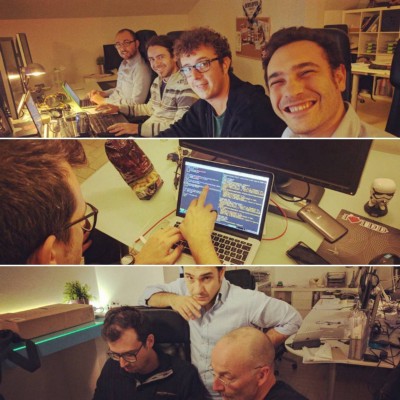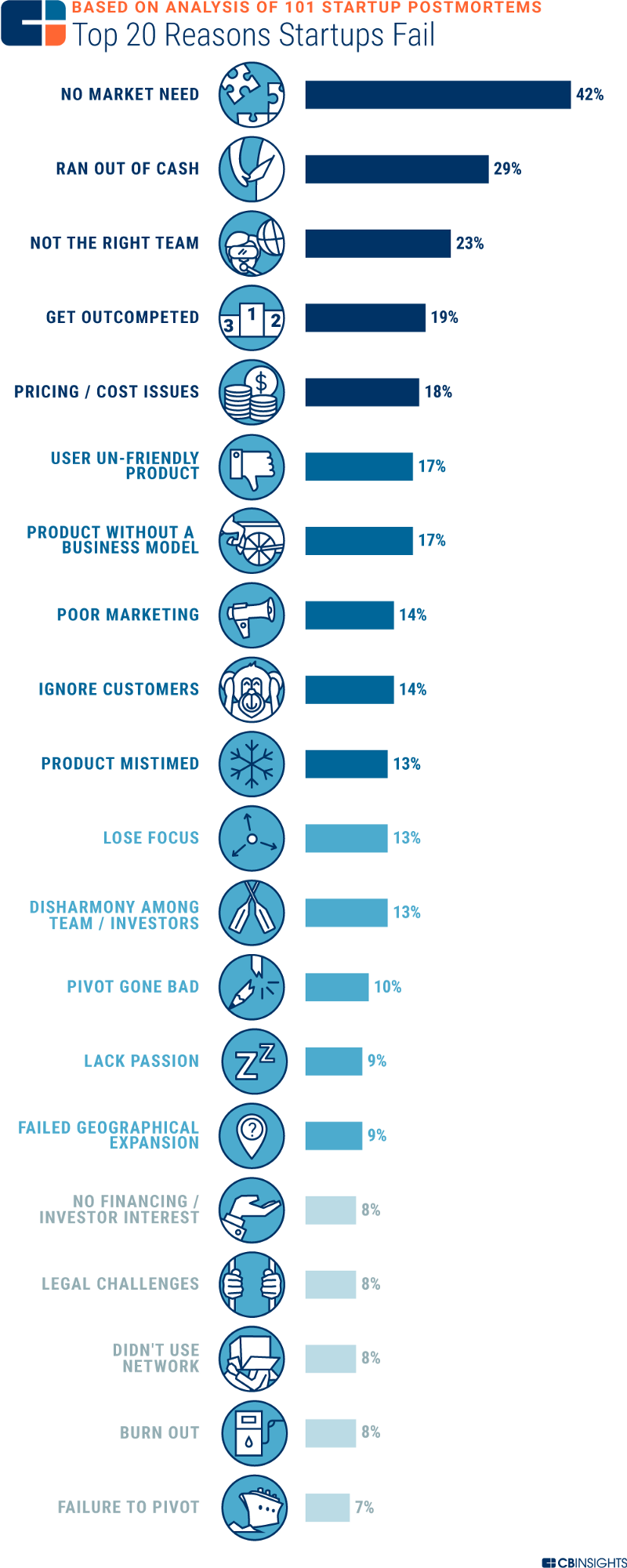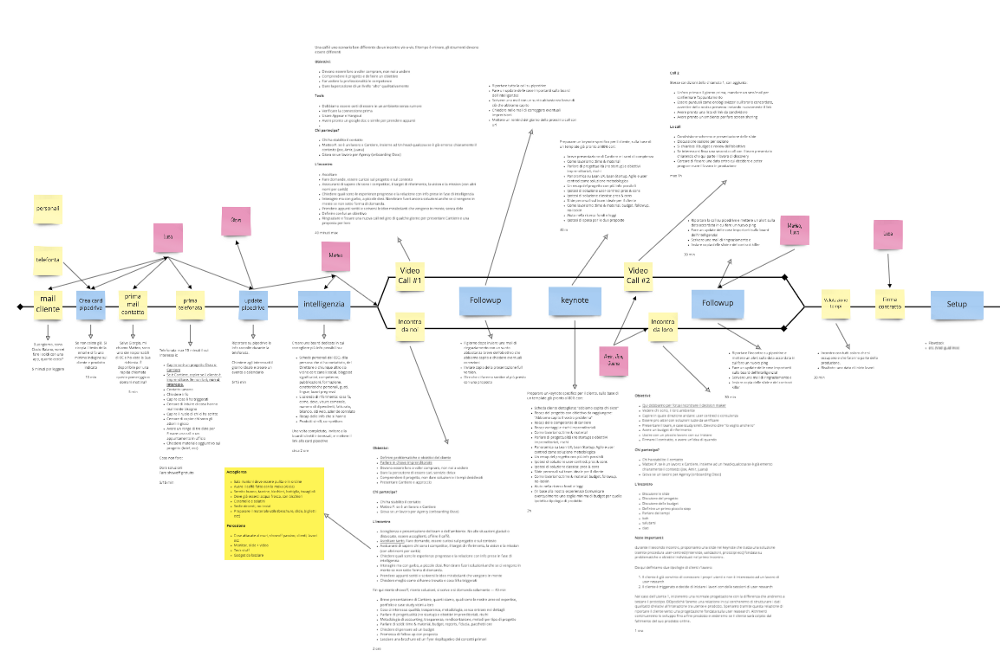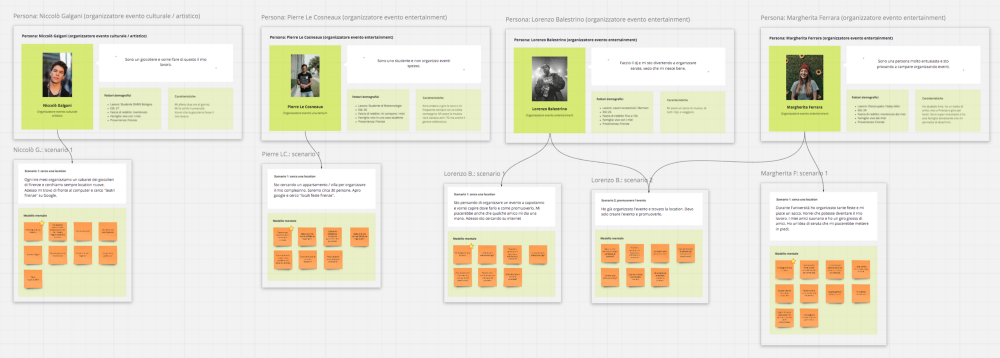In this article we are going to walk through our last two years experimenting Lean UX with more than 80+ clients.
Hot topics: Our way of selling Lean UX and the importance of marketing in UX.
Let's go! 👉
This year we suffered a lack of marketing coverage, here was the main issue:
How can we talk about KPI and its outcomes without an in-house marketing coverage?
We came to the following conclusion:
We think a Lean UX approach needs to be completely covered by a marketing section.
But only in certain projects, we are going to see which ones.
With “marketing section” we mean someone who is able to buy or acquire traffic and work strategically in the KPIs and outcomes approach structured by the Lean UX methodology, creating Facebook campaign, defining funnel chains, etc.
We are going to cover this in the second part of this article.
Moreover:
How do I sell Lean UX to a client who just needs an estimate for his website?
We came up with some answers and we are going to share them.
Let’s have a look at them, but first here’s a little recap of what happened:
Two years ago we wrote “Moving my team to Lean UX”.
The main challenge was:
How do I move a whole team to Lean UX?

Lean Panda is a very well-structured agile team with a consistent knowledge of Ruby on Rails and has a great in-house doozy called DatoCMS.
Well…shifting such a stable environment has been an odyssey! But trying was definitely worth the effort (and you have to try my UX friend!).
Last year we wrote “One year of Lean UX”.
The main challenge was:
Is Lean UX sellable?
It’s still a challenge, but at least today we have some answers.
The situation today is that we sell Lean UX to almost every client and we have defined the process pretty well: how many workshops to do, how many hours of sessions, which type of session to begin with, which exercises, how to set and monitor KPIs, when to do user research and how much, etc.
So now we are more comfortable in selling it.
The reason why we got this far is because we’ve been experimenting Lean UX with 80+ clients. But most of all:
We accepted failures and uncertainty
This is a must for anyone who wants to shift to Lean UX.
That being said, let’s share immediately our brand-new two-year experience concerns!
First one:
How can we sell Lean UX?
At Lean Panda we have, on average, a new client per week. Let me to talk about something which happened two weeks ago.
Cristina is the secretary of a big car company and she’s in charge of the social accounts and has some other communication tasks.
She came to us on behalf of her boss with the request of developing a social network. She had previously sent us a document with specific requirements and wanted an estimate.
First step: 👂 Listening to the client
I spent my first twenty minutes with Cristina quite in silence. I wanted her to express herself and I didn’t want to appear like a web guru who assumes he already knows how internet things work.
As I imagined, she talked about her social network idea but with a big lack of market research and very little knowledge of iteration-based methodologies.
2nd step: 💣 Talking about risks
I started to talk about investment risks but the key point is that I did it based on the things she had just told me.
The first topic is Waterfall vs. Lean UX. And this is our glorious first statement:
We, as a web agency, have decided to no longer accept the web holocaust of waterfall project.
Based on the evidence we have witnessed with our clients and also on this Neil Patel statement:
90% of startups fail
This (disrupting) statement is followed by the Lean UX proposal of reducing the time of market risks’ discovery.
3rd step: ⏰ Reducing time in market risks’ discovery
“Cristina, take a look at why 90% of startups die:”

This is an interesting research called “101 startups postmortems” by CB Insights (now the number of the research is 287).
“Cristina, Lean UX was born to cover you against these crucial aspects”.
“We need to spend three weeks to know if you are going to fail instead of nine months”.
“And what’s the secret of this approach? Switching from outputs to outcomes”.
This is hard to communicate but it's a Lean UX foundation:
Outcomes over Outputs
If you are reading this article, chances are that you are an Outcomes’ approach seeker, then you are not focusing your work on your product but on the impact you are making in the world through your product.
If you don’t know much about this foundation, take a look at this Jeff Patton video. I also suggest to deepen your knowledge in all of Jeff Gothelf’s extraordinary work.
But let’s go back to Cristina…
4th step: 🏄 you need to be a mature web entrepreneur to do it
“Cristina, let’s start talking about the problems you are going to have with your boss while trying to communicate to him all that we’ve just spoken about”.
🔔 Side note 1: we sound a big alarm each time we don’t relate directly to the decision maker. We are still experimenting, but chances are that soon it’s going to be a rule: No decision maker? No Lean UX.
🔔 Side note 2: I asked Cristina many times to have her boss with us and we missed two meetings because the boss “had a setback” thirty minutes before our meeting 😁. These are all signs that allow us to understand the feasibility of a Lean UX approach.
Here are the requirements we ask to our clients:
- No estimates but budgets with outcomes goals.
- Don’t be too attached to your idea. It is probably going to change (for the better).
- Are you going to work on this during the weekends? No way! It needs to be at least your part-time job.
- We need to work with the decision maker.
5th step: 👨🏫 how this whole thing works
In this fifth and final step I explained our approach to Cristina. Briefly:
- We kick-start everything with a two-morning long workshop called “Kickoff Workshop”
- We carry on with some Collaborative Design sessions in which we initialise our first iterations
- Each iteration has an allocation of hours so that we can monitor our total budget throughout time
And a lot of many other things such as tools to monitor the amount of hours we spend, chats, reports, sprint-plans, etc.
Final recap
We have recently defined all the steps, starting from the first contact with the client, meetings, commercial presentation, etc. to the contract and kickoff of the project:

I don’t think this is the right moment to deepen on this customer flow map, but we are probably going to write a post about it at some point in the future.
However, this scheme helped us a lot and it makes you understand that selling Lean UX is not that easy.
Doing a little recap, here are four key topics we have found that we need to explain in our commercial meetings:
- Waterfall and startup failure (Showing bad case studies)
- Outcomes approach (How does it work step by step?)
- ROI of Lean UX vs. ROI of Waterfall (Best key topic)
- Some of our positive case studies
In general:
Everything you say in order to sell Lean UX has to be said from a ROI point of view
That’s how we motivate our clients the most.
And what about you? How do you sell your Outcomes based methodology? Let us know in the comment section below.
👇
Now let’s come to our second big crucial aspect: that marketing thing 🔥.
That marketing thing 🔥
This last topic is going to be short but exhaustive enough to get the point and, hopefuly, to start a little debate.
How many of you got to the point of needing a complete in-house marketing section in order to do a good Lean UX job?
Let me explain this with the example of two clients of ours: Daniele and Stefano.
Recently we have started to work with their startup here in Florence. They want to create a service which allows people to create particular events hosted in houses or in special locations.
🔔 Side note 1: they have spent their last two years working on a platform with the result of no users, no data, traffic and an ugly and badly developed website.
🔔 Side note 2: they have opted for a Lean UX approach because they have failed with the normal approach.
These are the personas of our first workshop sessions:

Our first iteration was about validating the real needs of two of these personas. Therefore, we decided to run a Facebook campaign to intercept these personas and try to investigate them.
Our second iteration was a complete marketing strategy: we decided to run a Facebook campaign to make sure that traffic would land on a blog post which talks about some of these personas’ needs. In this post there are some well-placed links to our coming-soon events platform, including an opt-in form that generates leads.
Then these leads go into a matrix of five emails which ends with a conversion.
This whole last thing is called funnel chain and is total pure marketing.
So here is the bottome line.
What we've observed from many Lean UX workshops that we do each week with our clients and what I want to say in this last part of the post is that:
Most of the work that comes out from our Collaborative Design session (that is, the moment we design our Lean UX solution) is marketing stuff
Why? Because we have associated KPIs to our hypothesis and our audience is completely digital, so it’s quite likely that our solution is going to be about conversion rates and we are going to need to buy and handle traffic in a certain way.
If the audience of our product is digital (SaaS, social networks, online tools) then most of our Collaborative Design outputs is marketing stuff: runnind ad campaigns, defining funnel chains, etc.
That being said…
If you are going to sell Lean UX to a client for a project which is oriented to a digital audience, chances are that your work is going to be 70% a marketing job.
Is it logical to commission to someone external such a delicate job like this? We don't think so.
We've observed that this is different if the project has a little physical audience like some employees or a limited number of clients (like a tool for the employees of my company or a product that doesn't need a whole user engagement strategy but it is already placed and just needs to work), then our Collaborative Design output will be interviews, usability tests, etc. and we are going to focus in the experience itself.
In conclusion
Lean UX is for one-product-focus teams. That is something we have declared in our first post and we are still convinced about so far.
For agencies it is tough but not impossible.
This is our conclusion, for now:
If we want to sell Lean UX to agencies we need to recreate the one-product-focus environment of a startup
We need to set up a team which presents all the roles (design, dev, marketing, sales, UX etc.) focusing only in that particular project.
We need a full marketing coverage if the project is oriented to a big digital audience (social networks, SaaS, online tools).
We don't need a marketing coverage if the project is oriented to a limited number of users, like a company internal tool or a product that doesn't need to be placed in a certain market.
I know it’s tough, but these are our discoveries so far. We've seen many agencies organized in teams, it should be interesting to know if they can afford to have one team per project.
Let us know about your experience by writing below, and thanks for reading!
✌
